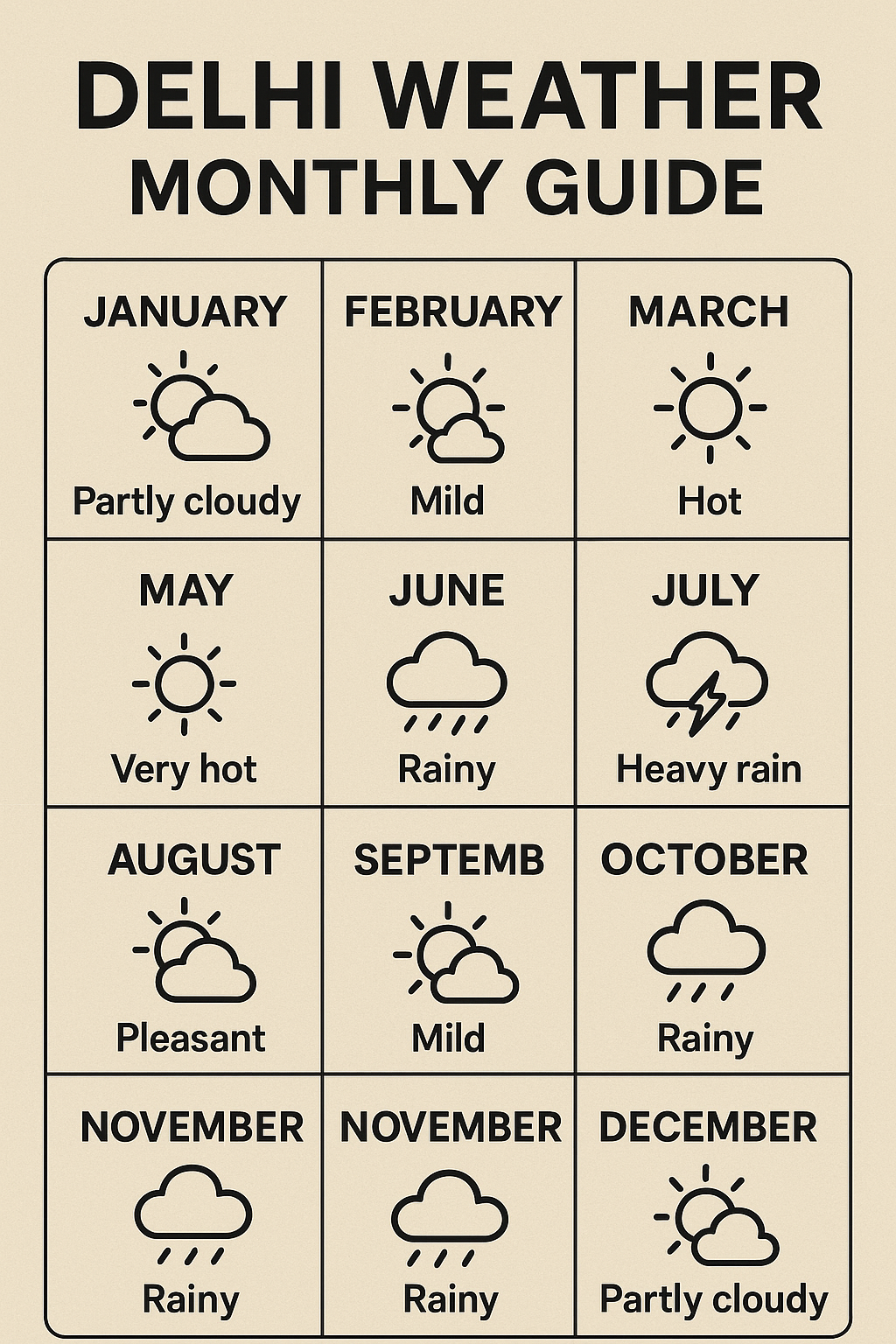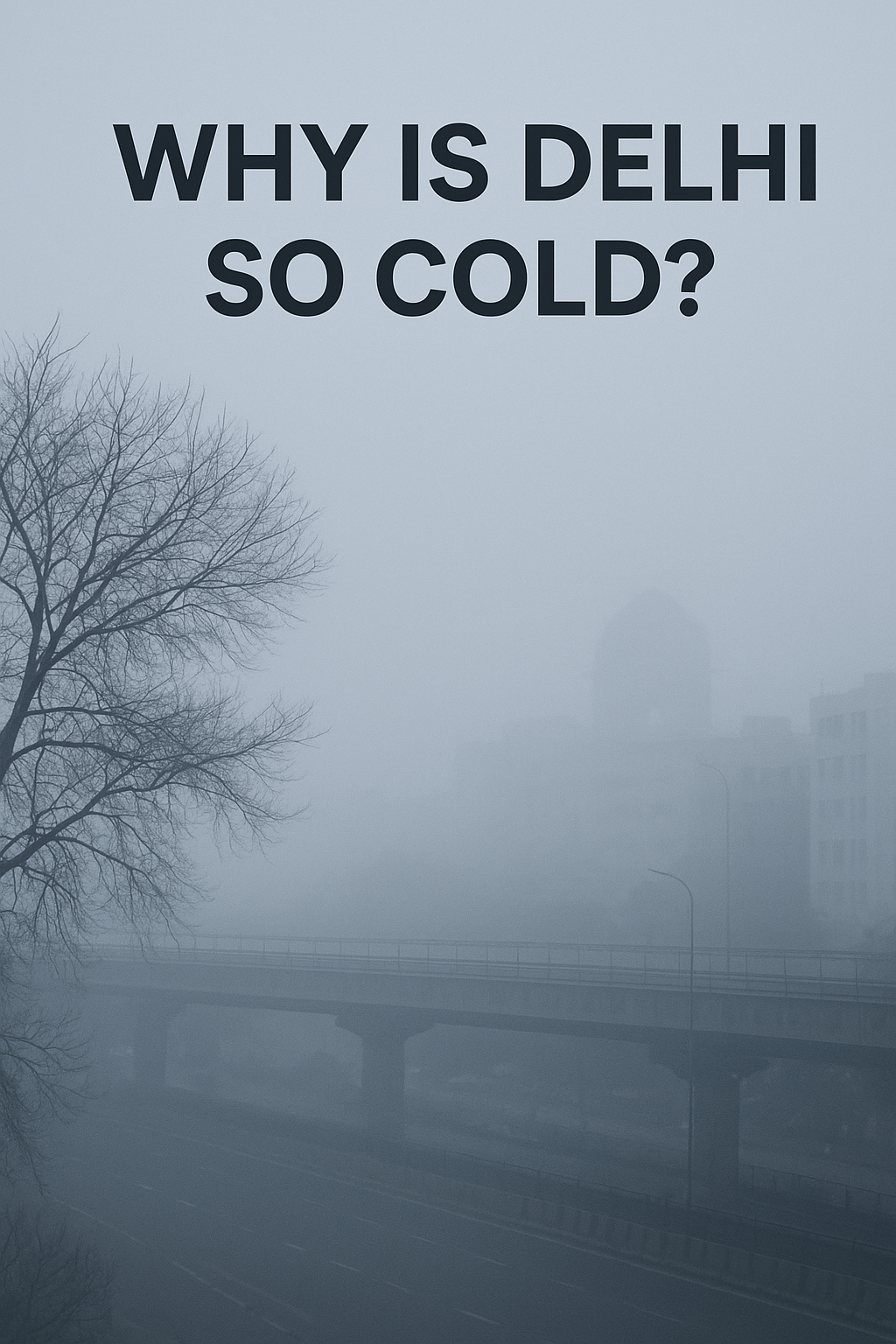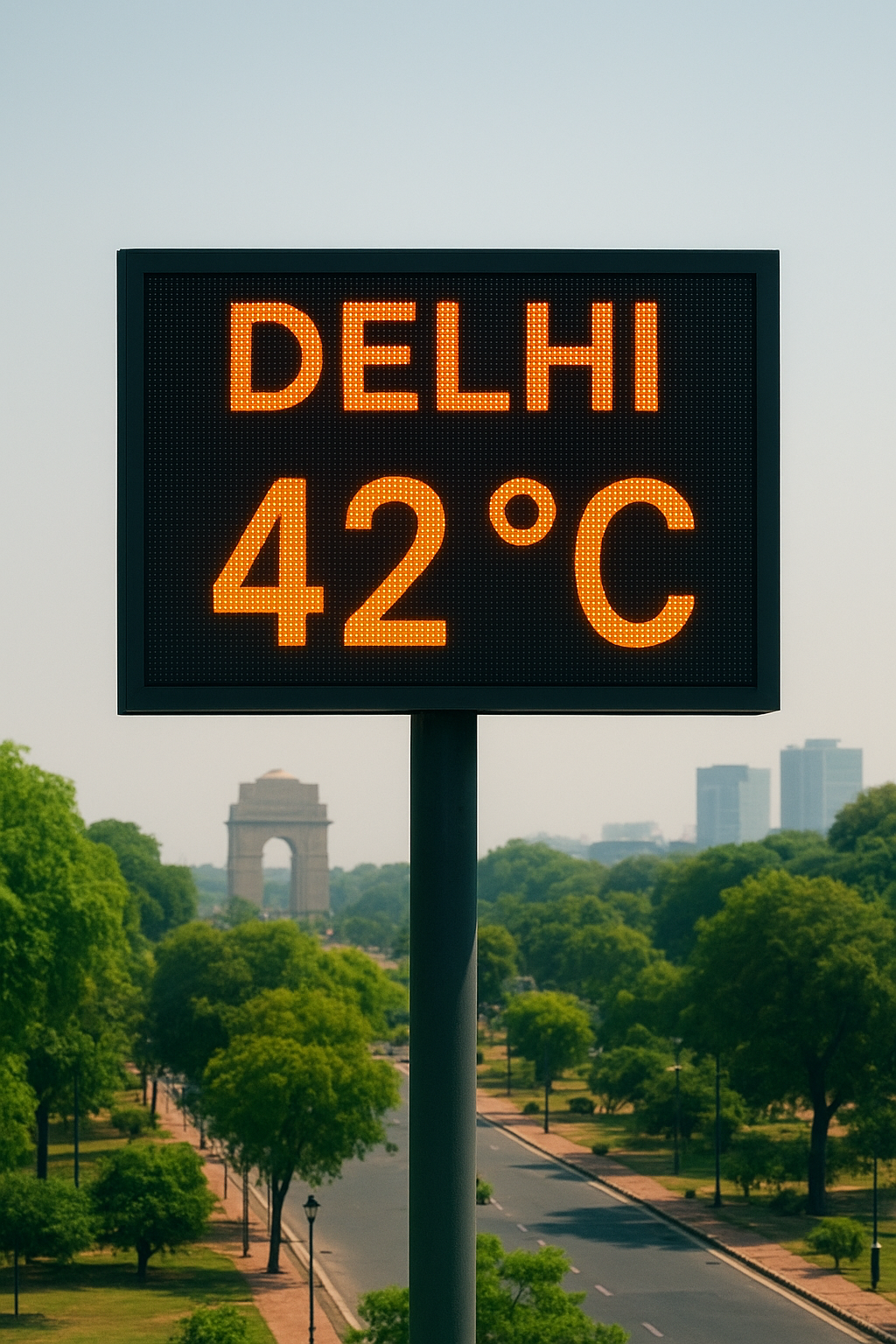Planning a trip to India’s dynamic capital? Understanding Delhi’s weather is the first step to a comfortable and memorable visit. Located in Northern India, Delhi experiences a wide range of climatic conditions, from chilly winters to a scorching hot summer and a revitalizing monsoon.
This comprehensive season-by-season guide will walk you through Delhi’s monthly weather patterns, helping you decide the best time to visit Delhi, what to pack, and what to expect during your stay.
An Overview of Delhi’s Climate
Delhi has a “humid subtropical” climate, characterized by three distinct seasons:
- Winter (October to March): Cool and pleasant.
- Summer (April to June): Hot to extremely hot and dry.
- Monsoon (July to September): Hot and humid with heavy rainfall.
Let’s break down what each month has in store.
Season 1: Winter (October to March) – The Peak Tourist Season
This is widely considered the best time to visit Delhi. The weather is at its most pleasant, making it ideal for sightseeing, outdoor cafes, and exploring historical monuments.
October & November: The Perfect Start
- Weather: The intense heat of summer has fully receded. Days are warm and sunny, while nights become increasingly cool and crisp.
- What to Expect: This period marks the beginning of the festival season, with Diwali usually falling in October or November. The air quality can start to decline post-Diwali due to firecrackers and agricultural burning.
- Packing Tips: Light layers for the day, and a light jacket or sweater for the evenings.
December & January: Peak Winter
- Weather: These are the coldest months. Daytime temperatures are pleasant (around 20°C/68°F), but nights and early mornings can be downright chilly, often dropping to 5-7°C (41-45°F). Dense fog is common, which can lead to flight and train delays.
- What to Expect: The famous Republic Day Parade on January 26th is a major highlight. Markets are decked out for Christmas and New Year.
- Packing Tips: Pack warm clothing—sweaters, jackets, scarves, and thermals for especially cold nights.
February & March: The Gentle Transition
- Weather: The harsh cold begins to fade. February is still mild, but by March, you’ll feel a significant warm-up. The days become warmer, signaling the approaching summer.
- What to Expect: This is a beautiful time as many flowers, including the iconic mustard blossoms, are in full bloom. Holi, the festival of colors, is celebrated in March.
- Packing Tips: A mix of light clothes for the day and a light jacket for the cooler evenings.
Season 2: Summer (April to June) – The Scorching Heat
Summer in Delhi is intense, with high temperatures and dry, dusty winds known as “loo.”
April: The Warm-Up
- Weather: The heat becomes pronounced. Daytime temperatures regularly cross 35°C (95°F).
- What to Expect: Outdoor activities during the afternoon become challenging.
- Packing Tips: Lightweight, breathable cotton clothing, a wide-brimmed hat, sunglasses, and strong sunscreen are essential.
May & June: Peak Summer Heat
- Weather: This is the hottest period. Temperatures frequently soar above 40°C (104°F) and can even touch 45-47°C (113-117°F). The heat is relentless, especially from late morning to late afternoon.
- What to Expect: Air conditioning is a necessity. It’s advisable to plan all outdoor activities for the early morning or late evening hours. Staying hydrated is critical.
- Packing Tips: Stick to the lightest clothes you have. Focus on sun protection and carry water with you at all times.
Season 3: Monsoon (July to September) – The Soaking Relief
The monsoon season brings much-needed relief from the heat, but introduces its own set of challenges with high humidity and heavy downpours.
July & August: The Heart of the Monsoon
- Weather: Humidity levels rise dramatically. Delhi receives the majority of its annual rainfall during these months, often in short, intense bursts that can cause waterlogging and traffic disruptions.
- What to Expect: The city turns lush and green. While the rain cools things down, the humidity can make it feel sticky. Be prepared for sudden changes in plans due to heavy showers.
- Packing Tips: An umbrella or a robust raincoat is a must. Waterproof footwear and quick-dry clothes are highly recommended.
September: The Monsoon Retreats
- Weather: The rainfall begins to taper off. The weather remains humid, but temperatures start to become more moderate.
- What to Expect: This is a transitional month. The greenery is still vibrant, and the festival season begins to ramp up towards the end of the month.
- Packing Tips: A combination of rain-ready gear and light summer clothing.
Delhi Weather at a Glance: Monthly Table
| Month | Season | Avg. High / Low (°C) | Key Characteristics |
|---|---|---|---|
| January | Winter | 21° / 7° | Cold, foggy mornings |
| February | Winter | 24° / 10° | Mild, pleasant |
| March | Winter | 30° / 15° | Warming up, pleasant |
| April | Summer | 36° / 21° | Hot and dry |
| May | Summer | 41° / 27° | Peak heat, very hot |
| June | Summer | 40° / 29° | Extremely hot, dry |
| July | Monsoon | 35° / 27° | Humid, heavy rainfall |
| August | Monsoon | 34° / 26° | Humid, continued rain |
| September | Monsoon | 34° / 24° | Less rain, still humid |
| October | Winter | 33° / 19° | Warm days, cool nights |
| November | Winter | 29° / 12° | Very pleasant |
| December | Winter | 23° / 8° | Cold, foggy |
Final Verdict: When is the Best Time to Visit Delhi?
For most travelers, the ideal time to visit Delhi is from October to March. The weather during these months is perfect for exploring the city’s rich tapestry of history, culture, and cuisine.
- For budget travelers: The shoulder months of March and September may offer slightly lower prices while still having manageable weather.
- For experiencing local culture: The winter months are packed with major festivals like Diwali, Christmas, Republic Day, and Holi.



